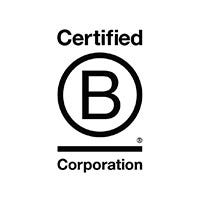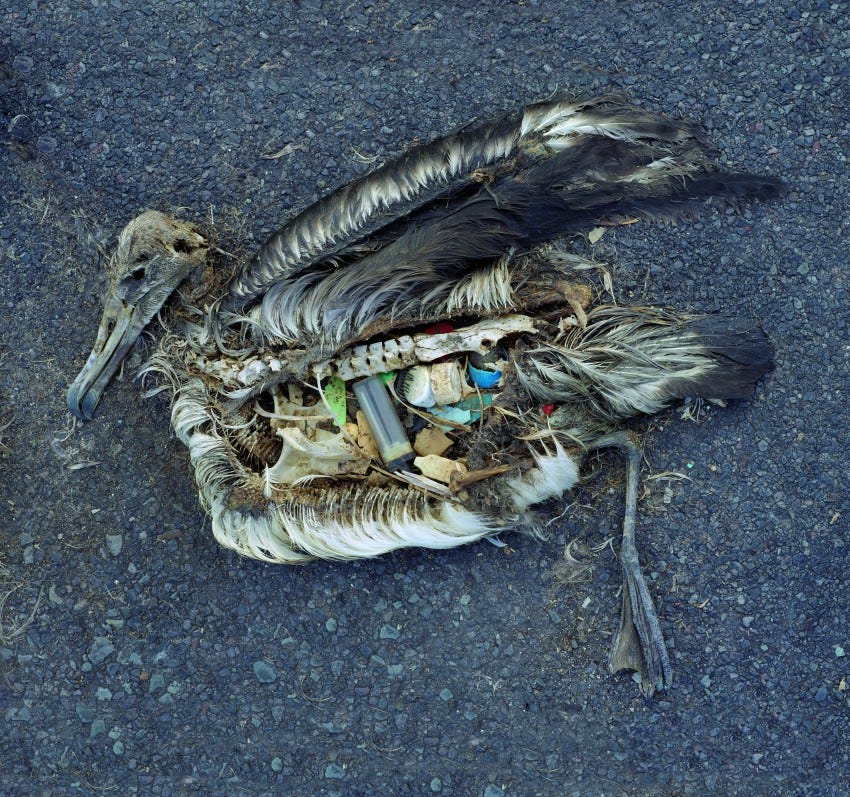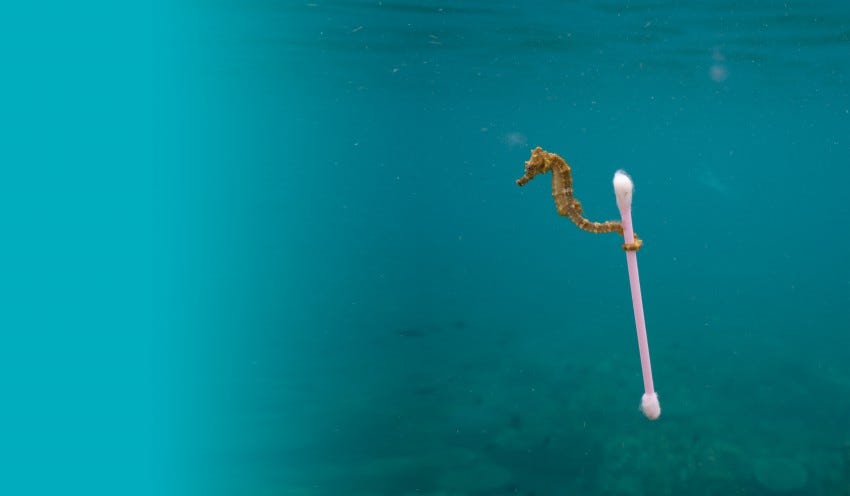How the Sustainable Development Goals Can Help Fight ‘Plastic Soup’
3 Actions Key to Curbing Plastic Pollution Around the World

By Maria Westerbos
One of the many reports regarding the issue of plastic pollution makes the following observation: 93% of the rubbish in low-income countries is dumped in landfills in open air compared to just 2% in high-income countries. Plastic waste that is dumped in open air often blows away. Plastic is an eternal plague in many ways because it does not biodegrade.
This report, What a Waste 2.0, published in 2018 by the World Bank, also asserts that the Sustainable Development Goals (SDGs) adopted by the United Nations in 2015 offer a framework for action. The implicit message to fix the problem is clear: just improve waste management systems in low-income countries.

While none of the 17 SDGs has plastic pollution as a main theme, the relationship between the SDGs and the need to curb plastic pollution is clear. The Plastic Soup Foundation, a UN Environment Programme-accredited non-governmental organization based in the Netherlands and founded in 2011, has highlighted the relationship among several SDGs:
- SDG 3: Good health and well-being.
- SDG 6: Clean water and sanitation.
- SDG 11: Sustainable cities and communities.
- SDG 12: Responsible consumption and production.
- SDG 13: Climate action.
- SDG 14: Life below water (protection of the seas and oceans).
- SDG 15: Life on land (restore ecosystems and preserve diversity).
One could easily link plastic pollution to other SDGs as well, given that plastic and plastic waste are omnipresent. The diverse negative impacts of plastic on sustainability clearly demonstrate that the world has to deal with a tough and persistent problem.
The Plastic Soup Foundation believes that the fight against plastic pollution involves three essential, distinct actions:
- Preventing plastic from entering the environment.
- Avoiding health risks.
- Realizing absolute reduction in plastic production.

Certified B Corporations meet the highest standards of positive impact on society and the environment. Learn what it means to be B Corp certified.
Framing the Issue
When the United Nations adopted the Agenda for Sustainable Development and its 17 SDGs in 2015, the fight against plastic pollution was not recognized as a separate SDG. Following the Honolulu Commitment of 2011, it was presented as a marine debris problem. Plastic pollution was not yet conceived to compromise freshwater environments, land or human health.
Since then, however, our insights have increased significantly. For instance, according to German scientists, land-based pollution with microplastics is an underestimated threat. The long-term impact of microplastics in soil can have all kinds of negative effects on terrestrial ecosystems with an even greater impact than that at sea.
The Stockholm Resilience Centre has indicated nine planetary boundaries for Earth, including climate change, loss of biodiversity, ocean acidification and chemical pollution. When these planetary boundaries are exceeded, ecological restoration is almost impossible. Plastic pollution is not yet in this list, but scientists have recently argued that plastic pollution should be considered as one of the planetary boundaries. Environmental plastic is irreversible — it is impossible or unrealistic to clean up, particularly when discussing microplastics — and plastic is present everywhere in increasing quantities.

A more difficult aspect of assessment within the framework of the planetary boundaries is to what degree plastic pollution will affect the Earth’s system, particularly in regard to the irreversible consequences for humans and ecosystems.
In July 2017, the United Nations met to discuss the implementation of Sustainable Development Goal 14 regarding underwater life and adopted the resolution, Our Ocean, Our Future: Call for Action. All countries agreed to “implement long-term and robust strategies to reduce the use of plastics and microplastics, in particular plastic bags and single-use plastics, including by partnering with stakeholders at relevant levels to address their production, marketing and use.”
In spite of this promise, reducing the plastic soup on an international scale has not yet been successful. On the contrary — American scientists argue that the expected 40% rise in plastic production in the next decade will risk “near-permanent contamination of the natural environment with plastic waste.” A frequently quoted prediction from the Ellen MacArthur Foundation report The New Plastics Economy of January 2016 is that in “a business-as-usual scenario the ocean is expected to contain 1 tonne of plastic for every 3 tonnes of fish by 2025, and by 2050, more plastics than fish (by weight).”
SDG target 14.1 is often referred to when combatting international plastic pollution. It reads: “By 2025, prevent and significantly reduce marine pollution of all kinds, in particular from land-based activities, including marine debris and nutrient pollution.”

The wording of this target is misused by some global industries to frame the issue in their favor. This strategy entails stressing certain aspects while omitting others, which manipulates and misdirects the public. The emphasis on marine plastic pollution suggests that the problem of plastic pollution can be adequately solved through end-of-pipe initiatives, such as cleanups, recycling, improvement of waste collection and incineration. Meanwhile, human health risks and the ongoing increase of plastic production are ignored.
A clear example of this strategy is the reaction of the World Plastics Council to the resolution adopted by the third UN Environment Assembly in December 2017 in Kenya. That resolution called for the strengthening of international governance structures in order to fight plastic pollution. The World Plastics Council, which represents all plastics producers worldwide, quickly responded to the resolution with a press release, welcoming the resolution because of the worldwide consensus that “better waste management” is needed to put an end to plastic pollution. To further its case, the release refers to an earlier report titled Stemming the Tide; Land-Based Strategies for a Plastic-Free Ocean.
The biggest contribution to the plastic soup originates from five Asian countries: China, Indonesia, the Philippines, Vietnam and Thailand. The report, largely funded by companies with vested interests, advocates better refuse collection in these countries and does not mention the word “reduction.”
The implicit message of this industry is clear: The world can carry on buying and using plastics with impunity, because these products are “good” for the environment and waste management is the where the problem truly lies. The responsibility of regulating plastic pollution therefore falls upon governments and consumers, and not upon companies.
Where to Begin?
The Plastic Soup Foundation and an international coalition of NGOs united in the Break Free From Plastic movement believe that it is not SDG 14 — with its focus on ocean cleanup — that should be the starting point for strengthening international governance in the fight against plastic pollution. The world should instead concentrate on SDG 3 (Good health and well-being) and SDG 12 (Responsible consumption and production) in order to prioritize real solutions that address the problem at its core.
This would compel organizations to confront plastic pollution throughout its life cycle. The initial focus would then be to realize an absolute reduction in plastic production in order to avoid and prevent plastic from entering the environment and thereby imposing health risks.
The world must refute the solutions proposed by multinational firms that promise 100% recyclable packaging, which entails using recycled material to replace new plastic and to reduce the amount of plastic per product. These solutions, which are often implemented by national governments when determining policy, simply allow businesses to function as usual, which translates to an unlimited growth of plastic, especially single-use plastic packaging.

Another recent example of the industry’s approach is the foundation of the Alliance to End Plastic Waste, in which 27 companies have pledged more than $1 billion to fight plastic pollution. This approach is two-fold: Solutions are to be developed for size and treatment of plastic waste, but reuse and recycling are promoted. The founding companies are among the world’s biggest investors in new plastic production plants.
Plastic is posing a health risk worldwide that must be challenged. In order to call attention to the health effects, the Plastic Soup Foundation launched the Plastic Health Coalition and issued a position paper on this issue.
What to Do?
How can we reduce plastic production and its associative harms in the first place? As explained in a press release by the Center for International Environmental Law in March 2019 at the fourth UNEA, a group of over 20 civil society organizations from the Break Free From Plastic movement will be pushing member states to ask this question, demanding that governments attack plastic pollution at its source.
If the fight against plastic pollution had been a separate SDG or an accepted planetary boundary, it would be easier to reach an international agreement. One solution comes in drafting a new global convention to prevent growth in plastic pollution and reduce harm to human health at all phases of the plastic production cycle.
Maria Westerbos is founder and director of the Plastic Soup Foundation. This article is partly based on articles published on plasticsoupfoundation.org and was originally published by Impakter.com.
B the Change gathers and shares the voices from within the movement of people using business as a force for good and the community of Certified B Corporations. The opinions expressed do not necessarily reflect those of the nonprofit B Lab.

How the Sustainable Development Goals Can Help Fight Plastic Soup was originally published in B the Change on Medium, where people are continuing the conversation by highlighting and responding to this story.
Source: B the Change
